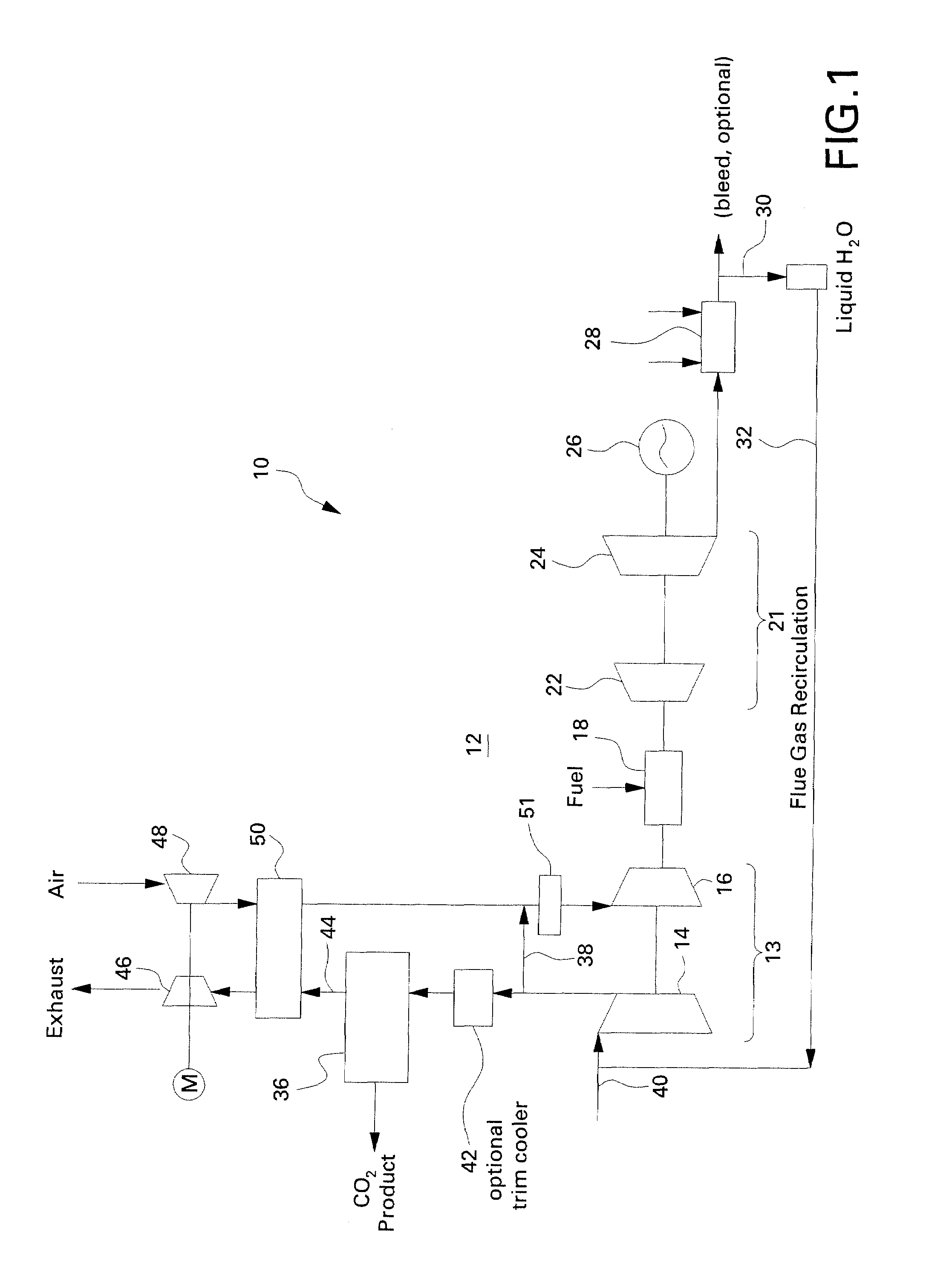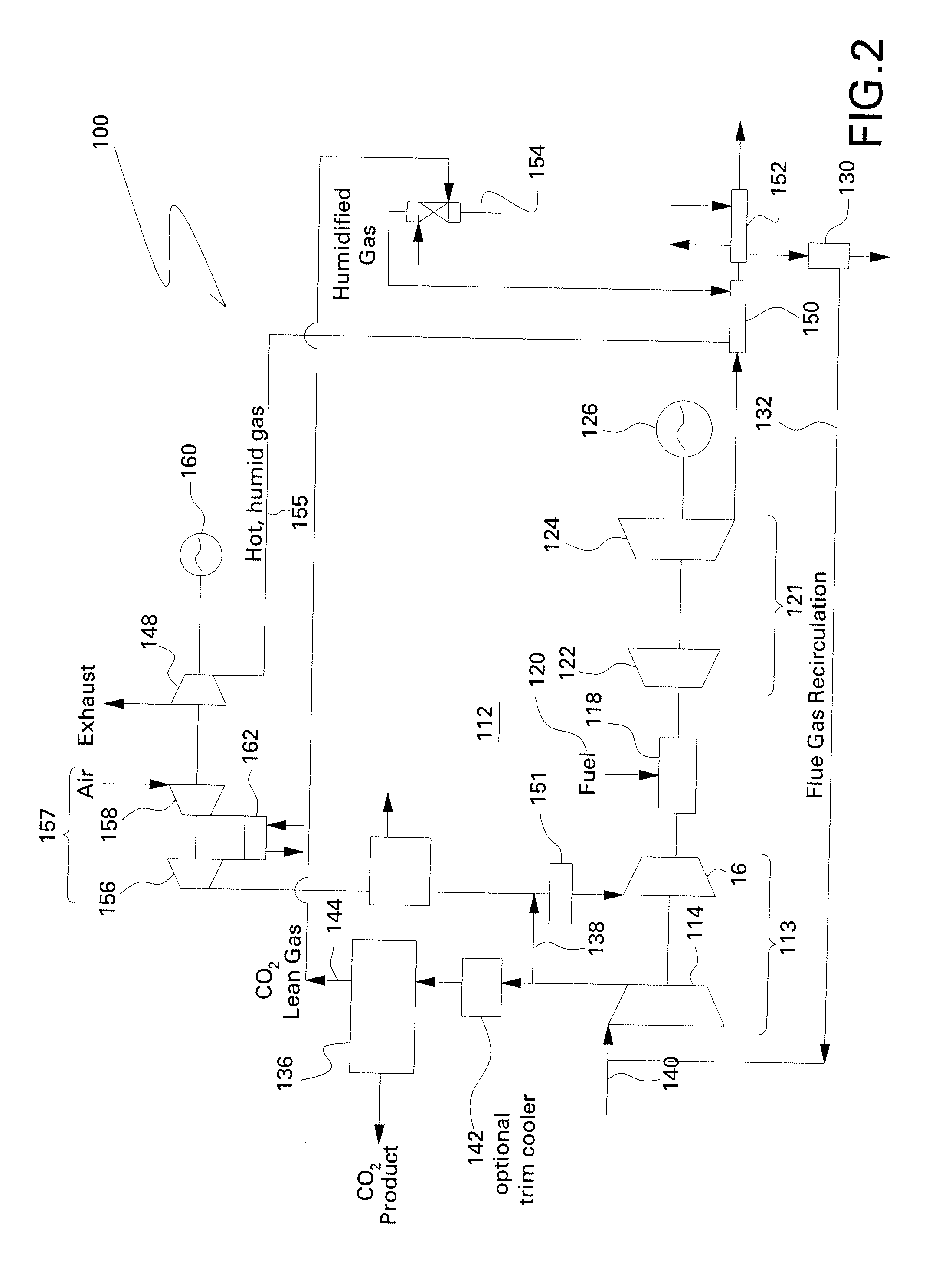Power plants that utilize gas turbines for power generation and processes for lowering co2 emissions
a gas turbine and power generation technology, applied in the direction of machines/engines, separation processes, mechanical equipment, etc., can solve the problems of large, expensive and energy-intensive co2 removal units, large and expensive cosub>2 /sub>removal devices, etc., and achieve the effect of lowering co2 emission and co2 emissions
- Summary
- Abstract
- Description
- Claims
- Application Information
AI Technical Summary
Benefits of technology
Problems solved by technology
Method used
Image
Examples
Embodiment Construction
[0016]The present disclosure provides a process for lowering CO2 emissions by separation of CO2 at high-pressures and concentrations in a power plant that utilizes gas turbines for power generation. As will be discussed in greater detail below, high gas pressures are achieved by extracting recirculated CO2-rich flue gas mid-way through the compression pathway of a gas turbine. As a result, flue gas recirculation increases the CO2 concentration within the working fluid, leading to an additional increase in CO2 partial pressure. As the concentration and partial pressure of CO2 is increased, a lower energy penalty is observed to remove the CO2. In addition, due to the CO2 separation at pressure, the volume flows to be treated are significantly reduced compared to atmospheric processes. Consequently, the size of the separation equipment can be reduced as well as the energy required for the separation. In addition, the significant increase in CO2 partial pressure also allows for the sele...
PUM
 Login to View More
Login to View More Abstract
Description
Claims
Application Information
 Login to View More
Login to View More - R&D
- Intellectual Property
- Life Sciences
- Materials
- Tech Scout
- Unparalleled Data Quality
- Higher Quality Content
- 60% Fewer Hallucinations
Browse by: Latest US Patents, China's latest patents, Technical Efficacy Thesaurus, Application Domain, Technology Topic, Popular Technical Reports.
© 2025 PatSnap. All rights reserved.Legal|Privacy policy|Modern Slavery Act Transparency Statement|Sitemap|About US| Contact US: help@patsnap.com



